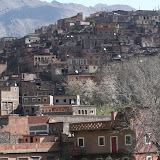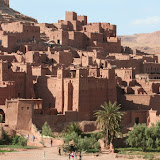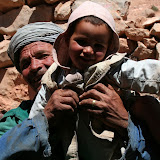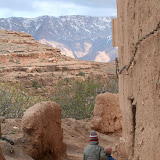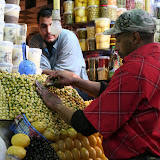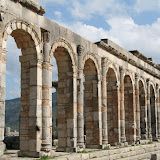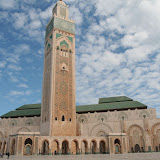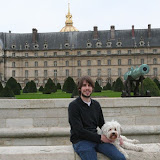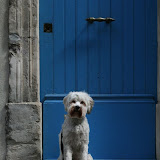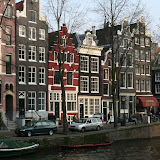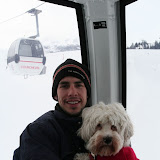Such an exciting month! We (finally) visited the Louvre, took a Jazz cruise on the Seine, enjoyed a picnic at the Eiffel tower, had a good friend, Sebastiaan, in from Amsterdam, and discovered the amazing Musee des Arts decoratifs and Musee Nissim Camondo.
Kimberly
For photos, click here.
After months of living in Paris, we finally really got around to sightseeing! This was the month when we finally visited all the museums we had talked about for months and explored the parks an neighborhoods we kept hearing about. The fact that spring was finally starting to come probably had quite a bit to do with it...and that we had yet more visitors!
Musee du Louvre: Neither of us really like the Louvre, but it's one of those things that you just really need to see in Paris. Perhaps it's because it is so large and overwhelming? Certainly because it's just not our style of painting (we much prefer the Impressionism in the Orsay)? And definitely because it is usually so crowded! Should anyone be planning to visit the Louvre, I have two recommendations for you. 1) Choose the day you go wisely: Don't go on Tuesday, as it is closed. But don't go on Monday (when all the other museums in Paris are closed...because everyone has the same idea). We went on a Wednesday, and it was practically empty! 2) Don't try to do the whole museum. Choose a wing, a style of art, or something special you want to see -- and limit it to that. Or, take a walking tour of the museum that focuses on the highlights. We downloaded Rick Steves audio guide off his website (
www.ricksteves.com/news/travelnews/0602/audiotour.htm) (you can also get it off iTunes) and found the commentary to be quite good at giving context to the works and bringing the installations to life.
Musee d'Orsay: This is both of our favorite museum in Paris. We love Monet, Manet, Renoir, Van Gogh...so that is a big part of it. But also the building itself is just amazing. They converted the old train station, Gare d'Orsay, into this incredible museum. A monument to the Industrial Revolution, the Orsay is covered by an arching glass roof allowing in floods of light. They even left parts of the station and attached hotel in tact, the heart of the museum is the restored main station (complete with its clock) and you can enjoy coffee, tea, or lunch in the hotel's grand dining room!
Musee des Arts Décoratifs: There will probably be many other sights on your list before you can get here. But if you are interested in furniture or interior design, don't miss this place! It is attached to the Louvre, but with a separate entrance (and far fewer visitors). The audio guide is very engaging and provides a really good overview of the history of French furnishings from medieval times through today. The highlight for us was when we were exploring the "contemporary" furniture section where they had hundreds of different chairs on display from the 50s-70s...we looked over and saw a chair that we swear my family has. (They are the plastic chairs that the Haimsohns lend and borrow from each other for big family dining occassions.) Too funny!
Musee Nissim de Camondo: We had never heard of this museum, and we had lived here for several months...but what a hidden jewel it is! This has become one of my favorite museums in all of Europe, as it does a great job of conveying the life and decor of the 18th century. The museum is was the home of an aristocrat -- rich with needlepoint chairs, tapestries (many from Beauvais or Aubusson), antiques, paintings, bas-reliefs, silver, Chinese vases, crystal chandeliers, Sèvres porcelain, Savonnerie carpets, and even an Houdon bust. The pre-World War I town house was donated to the Musée des Arts Décoratifs by Comte Moïse de Camondo (a Jewish banker) in memory of his son, Nissim, a French aviator killed in combat during World War I. (Highly recommend a picnic or walk around the nearby Parc Monceau before or afterwards!)
I also surprised Dan with a jazz cruise on the seine. Every Wednesday evening, the Melody Blues has a jazz cruise with different live music. You can go for just drinks or also for dinner (which is kind of mediocre). But the experience of listening to live jazz while cruising by floodlit Parisian buildings and monuments was really cool!
www.melodyblues.com (Porte de Bercy, 75012 Paris - Tel 01 56 95 03 15)
We also were lucky to have a good friend come visit from Amsterdam. Sebastiaan went to school with me at the Stanford GSB and also works at Bain (the company that I worked for before school...and will go back to once this dream year is over). We had been talking about visiting each other for months -- and this month we made it happen. We went to see him in Amsterdam, and he came to visit us in Paris. So much fun to show visitors around such a great city!
We also just walked around and enjoyed the lovely Parisian spring. Definitely take a look at our photos, as we have some nice shots of everyday Parisian life: children playing in the Champ de Mars on a Sunday, rugby fans standing outside a bar in the 4th watching "Six-Nations," Zookie in a cafe on Ile St. Louis...
And now, my commentary for the month:
I have already referenced one of my favorite books on the American experience in France,
Paris to the Moon, by Adam Gopnick. During his time in Paris, he (to his own surprise) ended up not only participating in, but somewhat spearheading an infamous group that created quite a legend of the French passion for food and antipathy towards business people, corporations, and things seen as American.
As a writer, Adam found company in the Brasserie Balzar in the 5th arrondissement when he moved to Paris. He was welcomed into the French club (surprising as he was an American) and joined forces with the other regulars when the Balzar was bought out by a chain of Parisian restaurants, the Flo Group.
The business model of the Flo Group typifies everything "American" about business -- they buy up restaurants, find ways to make them more efficient, cut costs, simplify the menu....and make more money. (but usually taking away the character of the place that made it special to begin with) The tension between the traditional, family owned and run, restaurant and the corporation seeking profit exemplifies the stereotypicial tension in Paris between things seen as French and those seen as American. The French hold onto their traditions and idealize them, while putting down anything seen to represent change, modernization, and (god-forbid) profit/money. This is obviously an over-simplification...and there definitely is something to be said for all the wonderful restaurants that have lost their soul due to the search for profit. But I do feel that it summarizes the tension that the French people feel towards America, Globalization, and Capitalism today.
After the Flo Group announced their takeover plans for the restaurant, a group of regulars, which included author Gopnick, banded together to create
Les Amis du Balzar (the friends of Balzar) and literally organized ambushes of the restaurant to force the new prospective owner to meet with them and make concessions about how the Balzar would be run after the purchase. Only in France...really, only in France! I'm really not kidding about this, to read more, here is an article from the International Herald Tribune, titled the "Struggle for the Soul of a Parisian Restaurant"
www.iht.com/articles/1998/08/08/balzar.t.phpGopnick, as member of
Les Amis du Balzar finds himself torn at times between empathizing with his colleagues passion to "save the soul" of the brasserie and understanding the mechanisms of the market and realities of business. The guy is a New Yorker... Here are some words from his book, Paris to the Moon, on the topic, especially the French love-hate relationship with America:
"The anti-Americanism that lent a piquant, alarming note to the Balzar wars had been as anti-Americanism most often is in France, not quite real, an abstract idea, a speech act with very few barbs in it. Anti-Americanism in France at the end of the twentieth century is in fact in some ways like anti-Catholicism in England in the nineteenth century. It is a powerful, important, influential, official doctrine, but it is also not entirely real: English people imprecated against the Catholics and the Pope, but that didn’t stop them from loving Venice, traveling to Florence, worshipping Raphael, and filling their houses with Italian pictures. Even the much-publicized fusses about American mass-produced food and French peasants “trashing” McDonald’s are almost pure media events. The French farmers knock down a McDonald’s for the benefit of the French media, which publicize it in Le Monde in order to see what The New York Times will have to say about it the next day. Anti-Americanism has enormous life as an abstract ideological principle and a closed circle of media events of this kind, but outside of a tiny circle on the elite left and, surprisingly, a slightly larger one on the elite right, it has almost no life as a real emotion..."
Now, the good stuff, restauarants!!
Brasserie Balzar
www.brasseriebalzar.com49 rue des Ecoles - 75005 Paris - 01 43 54 13 67
(If you are looking for an authentic, mediocre, Brasserie meal, this place will hit the spot. But it is just that...mediocre (meaning average, nothing special, not bad, just not great). And it's quite expensive for what you get. But come on, we had to eat here after hearing about the story of
Les Amis de Balzar and their fight to save the soul of the restaurant!)
L'Os a Moelle
3 rue Vasco-de-Gama - 75015 Paris - 01 45 57 27 27
(A remarkable place, well worth the trek down to the 15th. Even if we did have trouble along the way as the metro broke down due to a
"situation grave" (a serious situation). The six course prix-fixe menu for 38 euros has to be the best deal in all of Paris...especially for such gourmet, beautifully presented, and incredibly delicious food. Highly recommended.)
Le Fumoir
www.lefumoir.com6 rue de l'Amiral Coligny - 75001 Paris - 01 42 92 00 24
(If you are looking for a trendy restaurant where all the hip, young Parisians go...then look no further. It was quite a difference from the crowd we had joined for dinner the previous night at L'Os a Moelle, but refreshing to be around some folks are own age. :) Seriously this place has quite a reputation for not only cool ambiance and the "in-crowd", but also for some great food. Our experience at brunch definitely confirmed that. Eggs benedict, pancakes, fresh orange juice, coffee, and a bread basket for 22 Euros...I can think of worse ways to spend a Sunday morning/afternoon in Paris!)
La Flore en Ile
42 quai d’Orléans - 75004 Paris - 01 43 29 88 27
(A beautiful, traditional cafe on Ile St. Louis, this is a great place to spend an afternoon sipping coffee and enjoying one of their great cakes or pastries.)
Cafe Laurent
www.cafe-laurent.com33 rue Dauphine - 75006 Paris - 01 43 29 03 33
(OK, not a restaurant, but a really cool bar/lounge where you can hear live Jazz on Thursday, Friday, and Saturday evenings. Inside the Hotel d'Aubusson, a great kind-of pricey, but not too bad for Paris, hotel right around the corner from our apartment in the 6th.)


